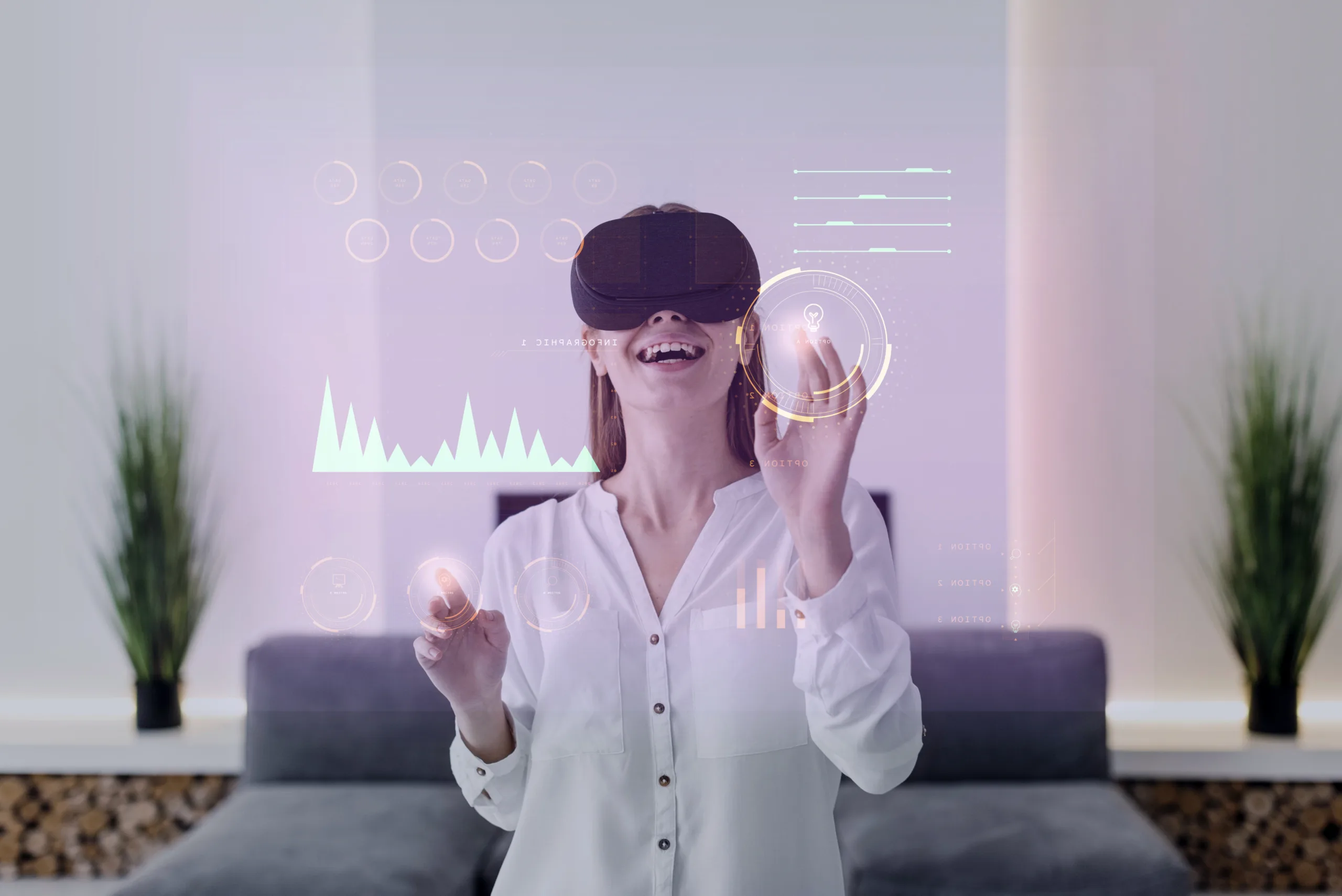Introduction:
In the ever-evolving landscape of digital marketing, businesses are constantly seeking innovative ways to engage and captivate their audiences. One such groundbreaking technology that has emerged to redefine the marketing game is Augmented Reality (AR) and Virtual Reality (VR). As we delve into the realm of “Beyond Reality,” this article aims to explore how AR and VR are revolutionizing product marketing, creating immersive experiences that go far beyond traditional methods.
The Evolution of AR/VR in Marketing:
Before we delve into the impact of AR and VR on product marketing, it’s crucial to understand the evolution of these technologies. Augmented Reality overlays digital information onto the real world, enhancing the user’s perception of their surroundings. On the other hand, Virtual Reality immerses users in a completely simulated environment, disconnecting them from the physical world.
The integration of AR and VR into marketing strategies has been a gradual process. Initially, these technologies found their footing in gaming and entertainment. However, with advancements in hardware and software, businesses began recognizing their potential to transform the customer experience.
1. Enhanced Product Visualization:
One of the most significant advantages AR and VR bring to product marketing is the ability to showcase products in a more interactive and realistic manner. Traditional online shopping often leaves consumers uncertain about the size, color, or overall appeal of a product. AR, by superimposing virtual elements onto the real world through a device’s camera, allows users to visualize products in their own spaces. VR, on the other hand, can transport users to virtual showrooms, enabling them to explore and interact with products as if they were physically present.
For example, furniture retailers can utilize AR to let customers see how a sofa would look in their living room, and automotive companies can enable users to virtually test drive a car from the comfort of their homes. This enhanced visualization not only reduces uncertainty but also significantly improves the overall shopping experience.
2. Immersive Product Demonstrations:
Traditional marketing relies heavily on static images, videos, or written content to showcase products. AR and VR take product demonstrations to a whole new level by providing immersive and interactive experiences. Companies can create virtual simulations allowing users to engage with products in ways that were previously impossible.
Imagine a cosmetics brand offering customers an AR app that allows them to virtually try on different makeup products before making a purchase. This not only enhances the customer’s understanding of the product but also adds an element of fun and personalization to the shopping process. Similarly, VR can be employed for in-depth product demonstrations, offering a 360-degree view and interactive features that engage the user on a deeper level.
3 Personalized and Interactive Marketing Campaigns:
AR and VR enable marketers to create highly personalized and interactive campaigns that resonate with individual preferences. By leveraging data analytics and user behavior insights, businesses can tailor AR/VR experiences to match the specific interests and needs of their target audience.
For instance, a clothing retailer could use AR to create a virtual fitting room where customers can try on different outfits without physically being in a store. This level of personalization not only enhances the shopping experience but also increases the likelihood of a conversion. Similarly, VR can be employed to transport users to virtual environments related to a product or brand, fostering a deeper emotional connection.
4. Augmented Retail Experiences:
Augmented Reality (AR) and Virtual Reality (VR). are reshaping the landscape of physical retail spaces, breathing new life into brick-and-mortar stores. Retailers can deploy AR applications to provide customers with additional information about products by simply scanning them with their smartphones. This creates an augmented layer of information, enhancing the in-store experience.
VR, on the other hand, can be used to create virtual storefronts or entire shopping environments. This is particularly relevant in a post-pandemic era where online and offline shopping experiences are merging. Customers can navigate through a virtual store, explore products, and make purchases without leaving their homes. This convergence of physical and digital retail spaces opens up new possibilities for businesses to reach and engage consumers.
Conclusion:
In conclusion, the integration of Augmented Reality and Virtual Reality into product marketing is not just a technological advancement; it’s a paradigm shift in how businesses connect with their audiences. The ability to offer immersive, interactive, and personalized experiences has the potential to redefine the entire customer journey.
As we look beyond the confines of reality, businesses must embrace the transformative power of AR and VR to stay ahead in a competitive market. From enhanced product visualization and immersive demonstrations to personalized campaigns and augmented retail experiences, the applications of these technologies are limitless.
The future of product marketing lies in the hands of those who dare to go beyond reality, leveraging AR and VR to create experiences that captivate, engage, and leave a lasting impression on consumers. The journey has just begun, and as technology continues to evolve, so too will the possibilities for elevating product marketing to unprecedented heights.
Experience the future of product marketing with augmented reality (AR) and virtual reality (VR). Dive into our comprehensive guide, where we explore innovative strategies to elevate your marketing efforts using AR/VR technology. Discover how to create immersive experiences that captivate your audience and drive engagement like never before.
Connect with us at Digital Sunbird to learn more about integrating AR/VR into your marketing strategy.
Join Digital Sunbird and unlock the potential of AR/VR to revolutionize your product marketing. Let’s embark on a journey to transform the way your audience interacts with your brand.
